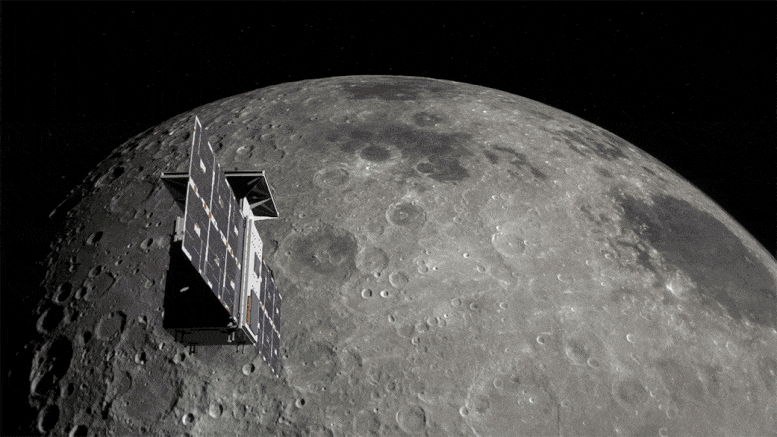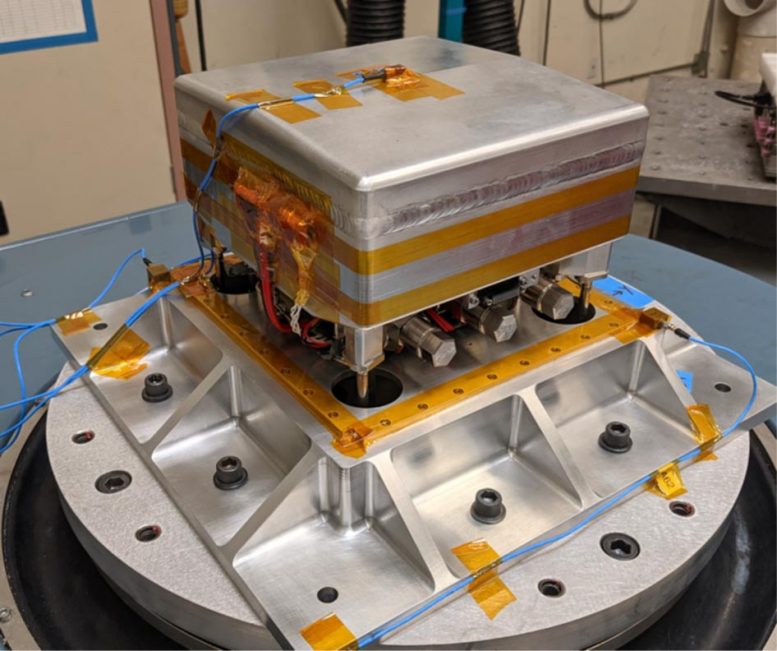
The CAPSTONE mission is planned for launch in 2021. Rocket Lab’s Photon satellite bus will deliver CAPSTONE into a trajectory toward the Moon. Credit: NASA/Rocket Lab/Advanced Space/Tyvak Nano-Satellite Systems
In 2021, NASA’s Cislunar Autonomous Positioning System Technology Operations and Navigation Experiment, or CAPSTONE, CubeSat will launch into a never-before-used cislunar orbit near the Moon.
As a pathfinder for Gateway, a Moon-orbiting outpost that is part of NASA’s Artemis program, CAPSTONE will help reduce the risk for future spacecraft by verifying the dynamics of a unique halo-shaped orbit. The mission will also demonstrate innovative spacecraft-to-spacecraft navigation technology and communications capabilities with Earth.
CAPSTONE’s journey to the Moon will take about three months, starting with its launch to low-Earth orbit on a Rocket Lab Electron. Rocket Lab’s Photon spacecraft will take over next and conduct a series of orbit-raising maneuvers to prepare the CubeSat for its transfer path to the Moon. After separating from Photon, CAPSTONE will utilize an energy-efficient ballistic lunar transfer using its onboard propulsion system and enter into a near rectilinear halo orbit in the vicinity of and around the Moon. There, it will maintain the orbit to inform future spacecraft and demonstrate new technologies.

CAPSTONE’s propulsion system undergoes environmental testing. Environmental testing ensures that spacecraft systems can operate after being launched into space and in the space environment. Credit: Stellar Exploration Inc.
CAPSTONE’s propulsion system is designed and built by Stellar Exploration Inc. of San Luis Obispo, California. Initially funded by NASA’s Small Business Innovation Research program, the system is approximately 8-inch (20-centimeter) square by 4-inch (10-centimeter) deep. The system’s eight thrusters are fed hydrazine propellant from an unpressurized tank. CAPSTONE’s super small, high-performance thrusters integrate proven NASA technology with state-of-the-art industry fabrication techniques.
CAPSTONE is led by Advanced Space of Westminster, Colorado. Tyvak Nano-Satellite Systems of Irvine, California, is building the microwave oven-sized CubeSat platform. NASA’s Small Spacecraft Technology program within the agency’s Space Technology Mission Directorate funds the demonstration mission. The program is based at NASA’s Ames Research Center in California’s Silicon Valley. The Launch Services Program at NASA’s Kennedy Space Center in Florida manages the launch service.









An article titled “Innovative Propulsion System… to Study Moon Orbit for Nasa’s Artemis Program” should at some point describe an innovative propulsion system.
The phrase “cislunar orbit near the moon” is redundant. Cislunar means “near the moon.”